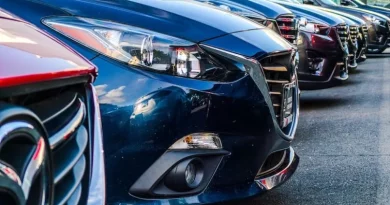8 Mechanical Problems You Can Diagnose and Fix Yourself
Last updated on July 19th, 2024 at 03:56 am
Mechanical problems are a very frustrating thing to deal with as a car owner. They can ruin a well-planned trip or make you late for work. This is why it’s important to have a vehicle that you can trust and rely on to get you to your destinations safely and quickly.
However, no matter how good your vehicle is, it’s almost inevitable that you run into some mechanical problems.
Here are 8 common mechanical problems you can diagnose and fix yourself without hiring an expensive mechanic! With the right knowledge and basic know-how, you’ll be able to get back on the road in no time.
But keep in mind that this post is written with the assumption that you’re aware of basic car parts like the battery spark plugs, radiator, and brake pads. If you’re not, you can read about them here.
#1. Leaking Fluids
Leaking fluids are a common problem car owners face. The first thing you want to do when checking for leaks is to look underneath your car. If you see a puddle of liquid, it’s important that you identify what type of fluid it is so that you can properly address the problem.
Different fluid leaks will require different solutions — for instance, engine oil requires an oil change, while antifreeze leaks require a flush and refill. You may be able to do these at home, but it’s a good idea to take your car to a mechanic afterwards to identify the cause of the leak. This is especially important if the leak recurs.
Also, if you’re tired of recurring mechanical issues with your car, it might be time to sell it and consider upgrading your daily driver. You can list online with Grays for a smooth, safe, and profitable selling process.
#2. Battery Issues
If your battery isn’t working correctly, it could be due to a number of issues, such as corroded terminals, loose connections, or a failing alternator.
To figure out which issue it might be, use a multimeter to measure the voltage in the battery; if there’s no voltage present then the issue is likely due to loose connections or corroded terminals, which you can fix at home.
If there’s voltage present, then it could be due to an alternator problem and you’ll need to take your car to a mechanic.
#3. Poor Fuel Economy
Poor fuel economy can be caused by several different factors, which include clogged fuel filters, dirty air filters, or worn spark plugs.
To diagnose this issue, start by checking your air filter. If it’s dirty, then replace it with a clean one and see if that helps improve your fuel economy.
If not, then make sure your spark plugs are in good condition and check the fuel filter for any signs of clogging or debris buildup. You might need a replacement for worn-out components, which can happen to any motorized vehicle, including trucks and tractors. See agricultural tractor parts from Eastman Parts.
#4. Overheating Engine
Overheating engines are usually caused by low coolant levels. But they can also be caused by faulty radiators, water pumps, and thermostats, so check all of these components before jumping to any conclusions about what’s overheating your engine.
Once you’ve identified what part(s) are at fault, then you can go ahead and replace them or have them serviced by a professional in order to get your engine running smoothly again!
#5. Brake Issues
Brake issues often stem from worn brake pads or rotors. If either of these components is worn out, then they need to be replaced as soon as possible to ensure safe driving conditions for yourself and other drivers on the road. Brake pads are easy to replace at home, and you can learn more about it here.
Low brake fluid is a critical issue for a vehicle’s braking system, impairing performance and safety. Inadequate fluid levels lead to longer stopping distances, a soft brake pedal, and potential damage. Warning lights indicate low levels, requiring prompt attention to prevent further problems.
Furthermore, insufficient brake fluid can cause overheating, resulting in brake fade. Air entering the brake system exacerbates the issue, reducing hydraulic force and further softening the pedal. Regular checks and immediate action by a qualified mechanic are essential for maintaining optimal brake fluid levels and ensuring overall vehicle safety.
Additionally, brake lines can also become damaged over time so make sure those are checked (and replaced if necessary) too!
#6. Poor Acceleration
Poor acceleration can be due to a number of different things, including an air intake system that’s blocked or restricted, spark plugs that are worn out, a fuel filter that’s clogged or dirty, or an exhaust system that’s leaking.
Inspect all these components and make sure they’re in good condition. If not, they’ll need replacement. Original Equipment Manufacturer (OEM) parts are considered the best for several reasons. They are designed and manufactured by the same company that made your vehicle. OEM parts undergo rigorous testing to meet specific performance and safety requirements.
These parts are known for their perfect fit, as they are designed to match the dimensions and specifications of the original components, ensuring seamless integration and compatibility. Many OEM parts come with a warranty, providing added protection for consumers. Additionally, using OEM parts can help maintain the resale value of your vehicle, instilling confidence in potential buyers about the vehicle’s maintenance history and overall condition.
#7. Sticking Car Door
A car door that won’t open or close properly can be a real hassle, but luckily it’s a problem that can often be fixed without needing to take the car to a mechanic.
You can simply try lubricating the hinges and latch with WD-40, and if that doesn’t do the trick, then you may need to clean the weather strip. Here’s how to do that:
- Use a household spray cleaner to clean the weatherstrip residue off the door frame
- Next, use silicone to coat the weatherstrip
- Wipe the lubricant onto the foam weatherstripping with a rag, making sure to wet the entire surface
- Leave the solvent to dry
If even that doesn’t work, you’ll need to get your door’s alignment adjusted by a professional.
#8. Unclog A Windshield Washer Jet
Windshield washer jets often get clogged with dirt and debris, especially if you don’t use them regularly.
To unclog the jet, start by using a needle or pin to poke any blockage out of the nozzle. If that doesn’t work, then try using compressed air to blow out any residue; this should help dislodge whatever’s stuck in there.
If the issue still persists, then it may be time to replace the jet altogether!
Conclusion
Learning how to diagnose and fix mechanical problems can save you both time and money down the line! By understanding some of the most common issues like leaking fluids, battery problems, poor fuel economy, overheating engines, and brake issues — you’ll be able to set yourself up for success when it comes time to tackle any mechanical issues with your vehicle!




